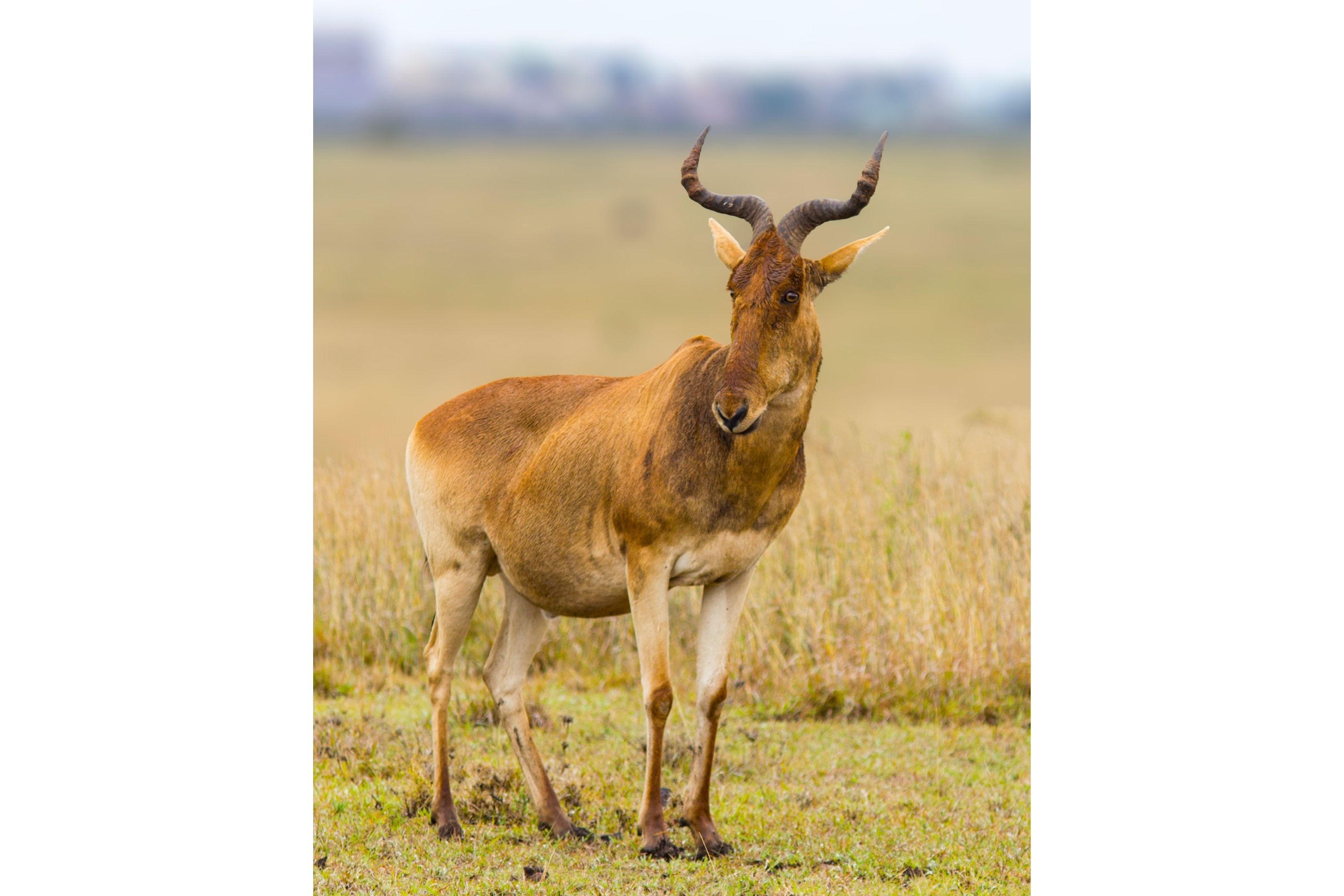Hartebeest
(Alcelaphus buselaphus)

Description
The hartebeest also known as kongoni, is an African antelope. It is the only member of the genus Alcelaphus. Eight subspecieshave been described, including two sometimes considered to be independent species. A large antelope, the hartebeest stands just over 1 m (3 ft 3 in) at the shoulder, and has a typical head-and-body length of 200 to 250 cm (79 to 98 in). The weight ranges from 100 to 200 kg (220 to 440 lb). It has a particularly elongated forehead and oddly shaped horns, short neck, and pointed ears. Its legs, which often have black markings, are unusually long. The coat is generally short and shiny. Coat colour varies by the subspecies, from the sandy brown of the western hartebeest to the chocolate brown of the Swayne's hartebeest. Both sexes of all subspecies have horns, with those of females being more slender. Horns can reach lengths of 45–70 cm (18–28 in). Apart from its long face,the large chest and the sharply sloping back differentiate the hartebeest from other antelopes. A conspicuous hump over the shoulders is due to the long dorsal processes of the vertebrae in this region. A large antelope with a particularly elongated forehead and oddly shaped horns, the hartebeest stands just over 1 m (3 ft 3 in) at the shoulder, and has a typical head-and-body length of 200 to 250 cm. The weight ranges from 100 to 200 kg (220 to 440 lb). The tail, 40 to 60 cm (16 to 24 in) long, ends in a black tuft. The other distinctive features of the hartebeest are its long legs (often with black markings), short neck, and pointed ears. A study correlated the size of hartebeest species to habitat productivity and rainfall. The western hartebeest is the largest subspecies, and has a characteristic white line between the eyes. Hartebeest inhabit dry savannas, open plains and wooded grasslands, often moving into more arid places after rainfall. They are more tolerant of wooded areas than other Alcelaphini, and are often found on the edge of woodlands. They have been reported from altitudes on Mount Kenya up to 4,000 m (13,000 ft). The red hartebeest is known to move across large areas, and females roam home ranges of over 1,000 km2 (390 sq mi), with male territories 200 km2 (77 sq mi) in size. Females in the Nairobi National Park (Kenya) have individual home ranges stretching over 3.7–5.5 km2 (1+3⁄8–2+1⁄8 sq mi), which are not particularly associated with any one female group. Average female home ranges are large enough to include 20 to 30 male territories.
Taxonomic tree:







